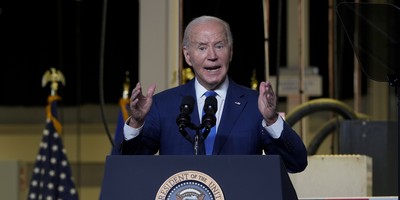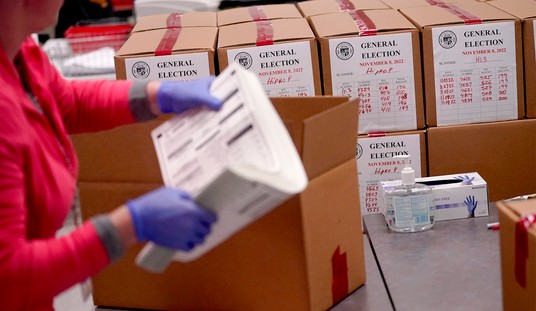Overnight, Rand Paul changed the dynamics of the Republican presidential race when he released his "Fair and Flat" tax plan on Thursday. As he said when he unveiled the plan on video, this is the boldest rewrite of the income tax system in 100 years. Even Ronald Reagan -- who dramatically improved the federal tax system -- didn't perform such a sweeping clean-up of the tax code.
For full disclosure, I spent the last several months helping design this plan with Sen. Paul -- so I'm biased. But there is no doubt that this plan, which reduces income tax rates from as high as 40 percent and business taxes from 35 percent down to a flat 14.5 percent rate, can only be described as explosively pro-growth and pro-jobs.
The 14.5 percent tax would apply to wages, salaries, capital gains, rents and dividend income. The plan eliminates the estate tax, telephone taxes, Internet taxes, gift taxes and all customs and duties.
This plan would take America from being one of the highest income tax rate nations in the world to the lowest. This would suck capital and jobs from the rest of the world almost immediately to these shores. America would move from a nation offshoring jobs, to one that would start in-sourcing millions of them. It gives U.S. workers a fair advantage.
Under the current tax system, the IRS taxes what is produced in America and sold overseas. Under Rand's plan, when goods are produced on these shores and sold abroad, no tax is applied. But when China brings goods into the United States for sale, a 14.5 percent tax at the border is applied. This will reward production and jobs here -- big time. Industrial unions should love this plan because the business tax is a GATT-legal tariff on all imported goods.
For low income and middle class families of four, the first $50,000 of income would be tax free. Moreover, because this plan eliminates the payroll tax withheld from worker paychecks, the average worker with a $40,000 income would get a $3,000 take home pay raise. At a time of falling wages, that would be a big boost to middle class financial security.
Recommended
Perhaps the strongest case for the Fair and Flat tax is that it eliminates all of the special interest loopholes and carve-outs in the tax code. Tax lobbyists in Washington would become an endangered species -- and it couldn't happen to a nicer group of people. The richest one percent get the preponderance of the tax write-offs, so getting rid of the big deductions would increase their taxable income while lowering the rate.
This plan is the essence of a fundamental principle of good and fair tax policy: broad base and low rates. This means investment decisions will be based on rates of return, not on political calculations.
Opponents are saying this is a European-style value-added tax. Wrong. In Europe, VATs were imposed on top of corrupt and high-rate income tax structures. This plan is not an add-on tax, but a replacement consumption tax that will reduce, not add to, the size of the welfare state.
Would this hike the deficit? The Tax Foundation says 2 million jobs would be added and the GDP would be 10 percent larger after a decade under this plan. This means in a decade the U.S. would have about $2.5 trillion a year more output, and the added jobs and income will add to tax collections. This is right out of the JFK and Ronald Reagan playbook: grow the economy to increase revenues.
Some skeptics at the New York Times and elsewhere are complaining that the Fair and Flat tax can't work in practice. Consider the Hong Kong experiment. More than half a century ago Hong Kong adopted a 15 percent flat tax and has been a glittering model of prosperity and tax efficiency ever since. Hong Kong is now one of the wealthiest places on the globe thanks in part to low tax rates and tax simplicity.
So this is a tax plan that will add to American dynamism by lowering tax distortions and by reducing the role and size of government in our lives. The tax code is the power center in Washington and this plan shuts that down for good. That's bad for K Street but very good for Main Street, USA.
So Rand Paul has suddenly injected a tax-policy game changer into the presidential debate. All the other candidates on the Republican side will have to alter their tax reform ambitions accordingly. Rand just hit the equivalent of a Stephen Curry three-pointer from half court. No doubt the rest of the candidates are studying the Fair and Flat plan and wondering: wow, why didn't I think of that?

























Join the conversation as a VIP Member